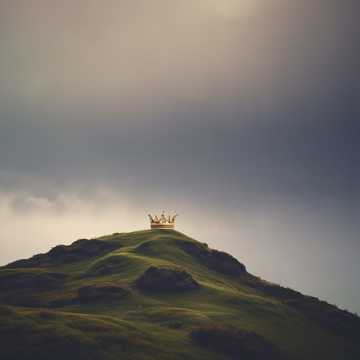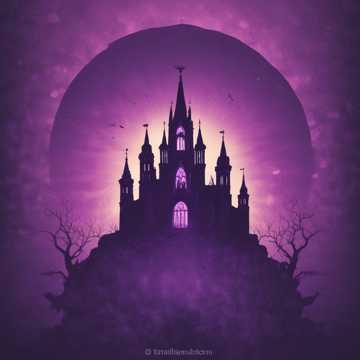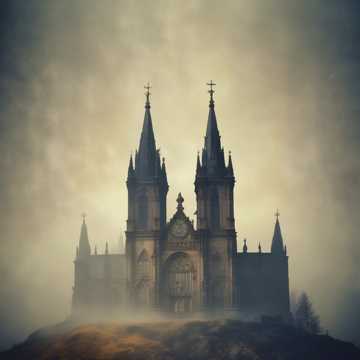Free Medieval Music Generator Powered by AI
Turn text into high-quality Medieval music effortlessly – no login required!
music.toolTips

Scythe Of Silverkeep
A blacksmith in Silverkeep forges a magical scythe for the daughter of forgotten gods, defying a kingdom that bans magic. The song is an epic, dark-fantasy ballad with medieval instruments and intense, cinematic production.
05:50
3 days ago

The Scythe of Silverkeep
In 'The Scythe of Silverkeep,' a blacksmith crafts a celestial weapon for the daughter of death and the moon, driven by divine forces and ancient magic, with epic, medieval orchestration guiding the tale of destiny and ruin.
03:52
3 days ago

Starlit Roads of You
A soothing, acoustic lullaby, 'Starlit Roads of You' intertwines tender vocals and gentle instruments to evoke a sense of deep love and connection, unbroken by distance. Its serene melody and tranquil vibe transport listeners into a peaceful, timeless space.
03:05
3 days ago

The Blacksmith's Forge
A medieval-inspired epic about a blacksmith forging a scythe for a mysterious daughter of prophecy. With thunderous percussion and orchestral strings, the song intertwines fate, magic, and destiny.
03:37
3 days ago

The Blacksmith of Silverkeep
In Silverkeep, a blacksmith is tasked by gods to forge a weapon for a nameless child of shadow, symbolizing a sacrifice for a world on the brink of magic's decay. The song blends dramatic orchestral melodies with themes of duty, fate, and forgotten legacies.
04:15
3 days ago

The Forge of Silverkeep
The song narrates the story of a blacksmith tasked withAI song analysis forging a powerful scythe for a divine figure, blending elements of myth, destiny, and fate through dramatic medieval-inspired orchestration.
03:54
3 days ago

The Blacksmith of Silverkeep
A dark, epic tale set in Silverkeep, where a blacksmith forges a scythe under divine and mortal pressures. His work intertwines with fate, magic, and a kingdom’s weight, as gods whisper and destinies are carved in shadows and steel.
03:06
3 days ago

The Blacksmith of Silverkeep
A mystical blacksmith in Silverkeep forges a powerful weapon guided by divine forces, aiming to bring justice and reclaim a throne. The song blends medieval folk and orchestral elements, creating an epic atmosphere of fate and rebellion.
03:34
3 days ago

The Blacksmith of Silverkeep
A blacksmith forges a legendary weapon at the gods' command to end a war, intertwined with themes of fate, sacrifice, and mystical powers. An orchestral, medieval-inspired composition with rich vocals and storytelling.
02:13
3 days ago

The Blacksmith of Silverkeep
A blacksmith in Silverkeep crafts a mystical scythe for the daughter of night, destined to wield powerful magic, as gods whisper and mythical forces guide the creation of an ancient weapon.
04:13
3 days ago

Scythe of Silverkeep
A blacksmith forges a scythe for a daughter of the gods in a world where magic is banned. As sparks fly, fate intertwines with rebellion, forging a path of defiance against a mortal king. The anthemic ballad combines cinematic soundscapes and ancient mythological themes.
06:04
3 days ago

The Scythe of Silverkeep
An epic medieval ballad about a blacksmith who defies a king's decree to forge a powerful scythe imbued with the magic of the gods. Set against a backdrop of defiance, it blends orchestral grandeur with mystical themes.
03:30
3 days ago

The Blacksmith of Silverkeep
A dark folk ballad about a blacksmith in Silverkeep forging a divine weapon for the daughter of death, set against a backdrop of ancient mythology and cosmic power.
03:21
3 days ago

The Scythe of Silverkeep
A blacksmith is chosen by gods to forge a scythe destined for a mysterious daughter of night. The song explores themes of fate, divine intervention, and sacrifice, with a powerful blend of orchestral and medieval instrumentation.
03:40
3 days ago

The Smith of Silverkeep
A blacksmith in Silverkeep defies a royal ban to forge a weapon for a daughter of Hades, embracing ancient magic and a legacy of rebellion, set to a soaring, medieval folk-rock melody.
05:45
3 days ago

Forged in Shadows
An epic song about a mysterious daughter, forged from shadow and fire, destined to wield a scythe to save the realm. The lyrics delve into mythology, fate, and divine whispers, set to a dark, orchestral medieval melody.
04:00
3 days ago

Golden Crown
A reflective medieval-folk tale of a golden crown that guides wandering souls through darkness, merging nature, memory, and hope into a luminous bittersweet journey.
03:36
Invalid date

The Hollow Crown
A dark, orchestral piece featuring deep strings, medieval undertones, and cinematic elements. The slow-building tension and emotional depth create a hauntingly spiritual atmosphere, ideal for epic storytelling and immersive soundscapes.
02:34
3 days ago

Shadows of the Eternal Flame
An epic and emotionally charged orchestral piece, 'Shadows of the Eternal Flame' blends cinematic reverb, deep brass, and medieval tones to evoke a dark, spiritual atmosphere with a slow-building, haunting tension.
05:51
3 days ago

Shadows of the Hollow Vale
An instrumental ambient piece inspired by medieval folk textures, evoking a dark, slow, and desolate atmosphere, ideal for immersive fantasy settings and looping soundtracks.
04:43
3 days ago
Introduction to Medieval Music
Medieval music refers to the music of the Middle Ages, a period that spans from roughly the 5th to the 15th century. This genre of music emerged from the remnants of the Roman Empire and developed into a distinctive form that reflected the social, religious, and cultural transformations of Europe during that time. Medieval music can be broadly divided into two categories: sacred and secular. Sacred music was primarily connected to the church, including Gregorian chant and liturgical pieces, while secular music encompassed folk songs, ballads, and troubadour melodies. The development of notation systems, such as neumes, allowed for the preservation and dissemination of Medieval compositions, setting the foundation for Western music traditions.
Sub-tags and Classifications of Medieval Music
Gregorian Chant
Named after Pope Gregory I, Gregorian Chant is a form of plainchant used in the liturgical services of the Catholic Church. It is characterized by monophonic, unaccompanied vocal music with free-flowing, modal melodies. The chant's rhythm is non-metrical, designed to follow the natural inflections of the Latin text, enhancing the spiritual and meditative aspects of worship.
Troubadour Music
Troubadour music refers to the secular songs composed and performed by poet-musicians in the courts of Southern France, Northern Spain, and Italy during the 12th and 13th centuries. These songs often focused on themes of chivalry and courtly love, characterized by lyrical poetry and melodies. Troubadours played a significant role in shaping the tradition of lyrical composition and storytelling in Western music.
Organum
Organum represents one of the earliest forms of polyphony, where a plainchant melody is accompanied by one or more additional voice parts. Emerging in the 9th century, organum evolved from parallel movement to more complex forms, such as free and melismatic organum. This development marked a significant step towards the intricate polyphonic compositions of the later Medieval period.
Ars Nova
The Ars Nova ('New Art') movement of the 14th century introduced innovations in rhythmic notation, allowing for greater complexity and variation in musical compositions. This era saw the rise of isorhythmic motets and the use of syncopation, which laid the groundwork for the transition from Medieval to Renaissance music. Composers like Philippe de Vitry and Guillaume de Machaut were pioneers of this style, pushing the boundaries of musical form and expression.
Famous Artists and Classic Works in Medieval Music
Hildegard von Bingen
Hildegard von Bingen was a German Benedictine abbess, writer, and composer of the 12th century. She is renowned for her contributions to sacred music, particularly her collection of compositions known as 'Symphonia armoniae celestium revelationum.' Hildegard's works are characterized by soaring melodies and vivid texts, which often drew upon her mystical visions, blending religious devotion with musical innovation.
Messe de Nostre Dame by Guillaume de Machaut
This iconic work is one of the first known polyphonic settings of the complete Mass Ordinary. Composed in the mid-14th century, 'Messe de Nostre Dame' showcases Machaut's mastery of polyphony and rhythmic sophistication. The composition includes movements like the Kyrie and Gloria, characterized by their complex interweaving of vocal lines and innovative use of isorhythmic techniques, which were revolutionary for their time.
Guillaume de Machaut
A leading figure of the Ars Nova movement, Guillaume de Machaut was a French poet and composer of the 14th century. His most famous work, 'Messe de Nostre Dame,' is the earliest known complete setting of the Ordinary of the Mass by a single composer. Machaut's use of intricate polyphony and rhythmic complexity in both sacred and secular music significantly influenced the transition to Renaissance music.
Carmina Burana
Although not strictly a single work but a collection of 13th-century poems set to music, 'Carmina Burana' provides insight into the secular music of the Medieval period. These pieces, written by Goliards—students and clerics—cover topics ranging from satire to love. The vibrant melodies and rhythmic patterns in 'Carmina Burana' highlight the lively and sometimes irreverent spirit of Medieval secular music.
Perotin
Perotin was a prominent composer of the Notre Dame School of polyphony in the late 12th and early 13th centuries. He is known for his development of organum, particularly the composition of multi-voice pieces such as 'Viderunt omnes.' Perotin's works exemplify the early stages of polyphonic music, characterized by their harmonic complexity and structural clarity.
Viderunt omnes by Perotin
A seminal example of early polyphonic music, 'Viderunt omnes' by Perotin is a four-voice organum composed for the Feast of the Circumcision. This work demonstrates the complexity of Notre Dame polyphony, with its layered vocal lines and dynamic interplay of melodic motifs. Perotin's composition illustrates the evolution of Medieval music from monophonic chant to richly textured polyphonic structures.
Application Scenarios for Medieval Music
Medieval music is frequently used in historical and fantasy films to create an authentic atmosphere that transports audiences to the Middle Ages. Films like 'The Name of the Rose' and 'Kingdom of Heaven' utilize Gregorian chants and medieval instrumentals to enhance the storytelling, providing a sense of time and place that aligns with the narrative.
Movie Soundtracks
Many video games set in medieval or fantasy worlds, such as 'The Elder Scrolls' series or 'Assassin's Creed,' incorporate Medieval music into their soundtracks. This genre helps to immerse players in the game environment, evoking the sounds of ancient castles, bustling medieval markets, and epic battles, thus enriching the overall gaming experience.
Video Game Background Music
Medieval music plays a crucial role in themed events such as Renaissance fairs, historical reenactments, and medieval banquets. Performers use traditional instruments like the lute, harp, and hurdy-gurdy to recreate the soundscapes of the Middle Ages, providing an authentic auditory backdrop that enhances the atmosphere and educational value of these events.
Themed Events and Reenactments
The calming and spiritual nature of Gregorian chant and other forms of sacred Medieval music makes it suitable for use in therapeutic and meditation settings. These compositions, with their repetitive structures and soothing harmonies, are often employed to promote relaxation, reduce stress, and aid in mindfulness practices.
Therapeutic and Meditation Settings